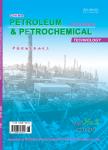Development and Lubricating Properties of Rolling Oil for Stainless Steel Cold Rolling
Development and Lubricating Properties of Rolling Oil for Stainless Steel Cold Rolling作者机构:Shanghai Research & Development Center Lubricant Company SINOPEC Shanghai 200080 Guangzhou Mechanical Engineering Research Institute School of Materials and Engineering University of Science and Technology Beijing
出 版 物:《China Petroleum Processing & Petrochemical Technology》 (中国炼油与石油化工(英文版))
年 卷 期:2011年第13卷第2期
页 面:57-64页
核心收录:
学科分类:081702[工学-化学工艺] 08[工学] 0817[工学-化学工程与技术] 080203[工学-机械设计及理论] 0802[工学-机械工程] 080201[工学-机械制造及其自动化]
主 题:stainless steel cold rolling oil rolling lubrication friction thermal analysis
摘 要:Appropriate base oils and homologous additives such as extreme pressure and anti-wear agents,oiliness agents and antioxidants were selected,and experiments testing the compatibility performance between additive,base oil and other components were carried out to develop the SK and SD series of rolling oils for cold rolling of stainless *** developed oils were used in the stainless steel cold rolling lubrication experiments,and were successfully applied in the actual cold rolling operation of stainless *** with a foreign product,the tribological properties,the thermal oxidation stability,and the rolling lubrication performance of the developed stainless steel cold rolling oils were *** results showed that the tribological properties of the thereby developed rolling oils and the reference one were almost at the same level,and to some extent the performance of rolling was even better than the foreign product,at the same time the stainless steel sheet could retain its well annealed ***,within a certain range,the lubrication of the rolling oil became better as its viscosity increased at the same level of saponification value,which could provide a lower friction coefficient,so that a higher maximum reduction ratio of the rolled piece through a constant roll gap and a minimum thickness could be ***,similar phenomena appeared as the saponification value increased at a same viscosity level of the rolling oils.



